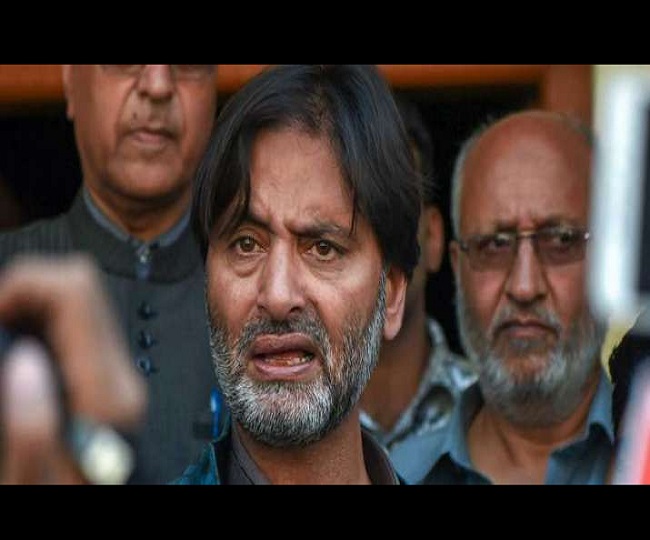- By Aalok Sensharma
- Wed, 16 Mar 2022 01:14 PM (IST)
- Source:JND
New Delhi | Jagran News Desk: The Kashmir Files, written and directed by Vivek Ranjan Agnihotri, has become the talk of the town across India with political parties playing blame game over the exodus of Kashmiri Pandits. Recently, Congress has tweeted some "facts about Kashmiri Pandits issue" and alleged that it took place under Governor Jagmohan, who the grand old party claimed was a Rashtriya Swayamsevak Sangh (RSS) man.
"BJP-supported VP Singh government came to power in December 1989. Pandits’ migration started the very next month, in January 1990. BJP did nothing and continued supporting VP Singh till November 1990," the Kerala Congress had tweeted.
Later, the Bharatiya Janata Party (BJP) hit back at Congress and shared a picture of separatist leader Yasin Malik, who was involved in the killing of four Indian Air Force (IAF) personnel, along with former Prime Minister Dr Manmohan Singh.
Several BJP leaders claimed that Congress was responsible for "creating such situations" in the Valley that forced Kashmiri Pandits to leave. "They were murdered, there was a genuine fear for their lives, so they left... things have improved dramatically after the revocation of Article 370," said BJP MP KJ Alphons.
Congress and BJP's blame game over the exodus of Kashmiri Pandits has once again brought the limelight on Yasin Malik, the pro-Pakistan separatist leader who became the second name of terror in Jammu and Kashmir.
Who is Yasin Malik?
Born on April 3, 1966, in Srinagar, Yasin was the chairperson of the Jammu Kashmir Liberation Front (JKLF) that was originally responsible for militancy in the Kashmir Valley. It is believed that Yasin became a rebel in the 1980s after he watched an alleged altercation between Army personnel and civilians.
In the 1980s, he formed the Tala Party and even tried to disrupt the 1983 cricket match of India and West Indies. For this, Yasin was arrested and sent to jail for four months. After his release, Yasin changed Tala Party's name to Islamic Students League (ISL).
In 1987, the ISL joined the Muslim United Front (MUF) for the assembly elections. However, the 1987 elections were regularly disrupted and reports of rigging and booth-capturing became common. Some experts claimed that the 1987 elections were responsible for the rise of insurgency in the Valley.
After the polls, Yasin went to Pakistan-occupied Kashmir (PoK), but returned to India in 1989 and became a member of the Jammu and Kashmir Liberation Front (JKLF). In 1990, Yasin, along with other JKLF terrorists, killed four personnel of the Indian Air Force (IAF). He was also among the separatist leaders to lead the genocide of Kashmiri Pandits in the 90s.
Yasin was also involved in the kidnapping Rubaiyya Sayeed, the daughter of the then Union Home Minister Mufti Mohammad Sayeed. In August 1990, Yasin was captured and sent to prison. However, he got released in 1994. In 1999, he was once again arrested under the Public Safety Act (PSA) and then again in 2002 under the Prevention of Terrorism Act.
Later in the 2000s, Yasin said he is shifting to mainstream politics. In 2020, he was charged under the Terrorist and Disruptive Activities (Prevention) Act (TADA), the Arms Act 1959, and Ranbir Penal Code for the attack on IAF personnel in the 90s.

